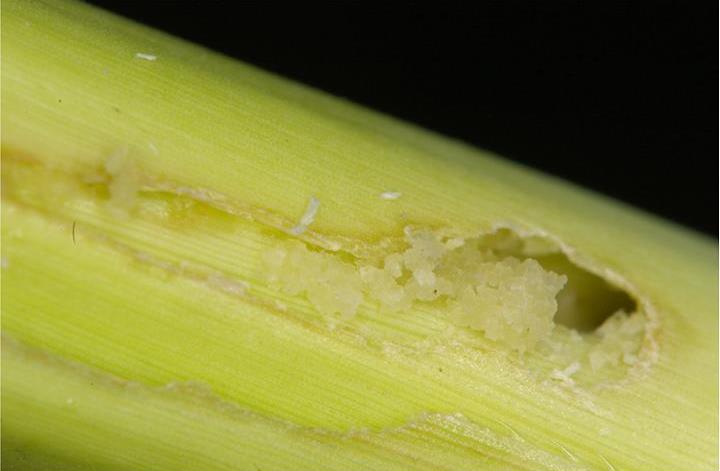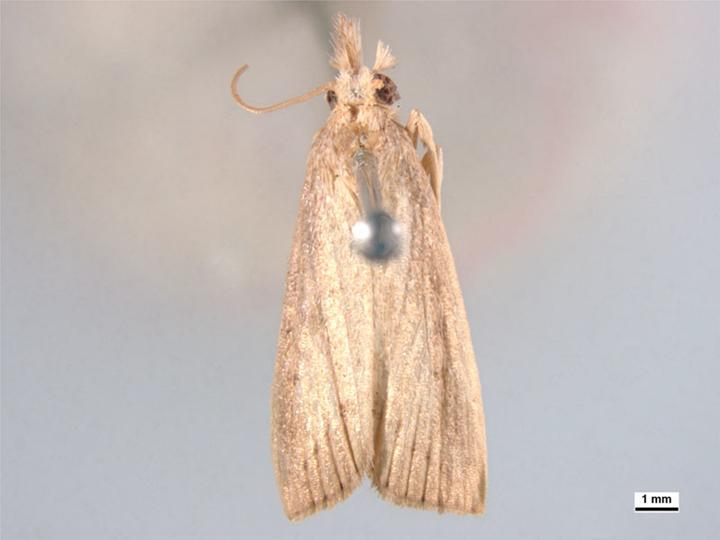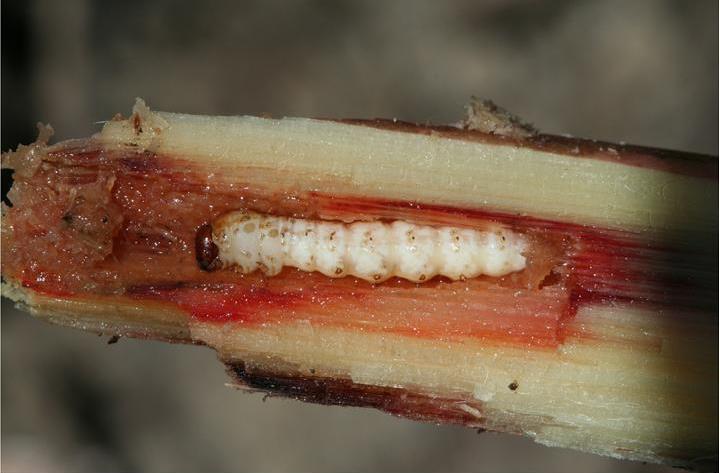
Sugarcane stem borer
| Primefact number | Edition | Published | Author |
|---|---|---|---|
| 1511 | First | Aug 2017 | Plant Biosecurity and Product Integrity |



Sugarcane stem borer (Chilo terrenellus) is an exotic plant pest not present in Australia. This insect is a serious threat to Australia’s sugarcane industry.
Sugarcane stem borer (Chilo terrenellus) is a stem boring insect which is a serious pest of sugarcane. Sugarcane stem borer caterpillars damage sugarcane plants by boring or tunnelling inside their plant stems (Figure 1).
Notifiable status
Sugarcane stem borer (Chilo terrenellus) is not a notifiable plant pest in NSW.
However, if you suspect sugarcane stem borer (Chilo terrenellus):
- Call the Exotic Plant Pest Hotline 1800 084 881
- Email biosecurity@dpi.nsw.gov.au with a clear photo and your contact details
A full list of notifiable plant pests and diseases can be found in Schedule 2 of the NSW Biosecurity Act 2015.
Description
Sugarcane stem borer moths have small yellow-brown bodies with 25-36 mm wingspans. They have 2-3 dark spots on their straw coloured forewings. The dirty white to grey hindwings have a smoky band along the wing edges (Figure 2).
Caterpillars have dark brown heads, with longitudinal lines of dark brown hairs along the sides of their white bodies. Fully grown caterpillars are 20-30 mm long (Figure 3).
The flat, oval, creamy white eggs are about 1 mm long. They are laid in clusters of 10-100 eggs.
Damage
Sugarcane stem borer caterpillars kill the plant growing points and cause “dead hearts” (the youngest still unfolded leaves wilt and die), broken sugarcane stalks and reduced sugar contents in infested sugarcane crops.
The tunnels inside the plant stems allow other pests and diseases into the sugarcane stalks which can also increase crop losses.
Infested sugarcane stalks are easily broken by the wind. Sugarcane stem borer caterpillars cause 10% yield losses in sugarcane crops in Papua New Guinea.
Lifecycle
Sugarcane stem borers have four lifecycle stages: eggs, caterpillars, pupae and moths.
Female moths lay their egg clusters on either side of the sugarcane leaves and occasionally on the plant stems. The eggs hatch into caterpillars after incubation.
The caterpillars feed together on the top leaf sheaths before separating and individually boring into the leaf sheaths or plant stems. Inside the plant stems caterpillars become pupae before emerging as moths.
The female moths live for 1-6 nights after emergence, when they mate and lay their eggs on nearby sugarcane plants. Sugarcane stem borers can have six overlapping lifecycles in a year, with each lifecycle lasting 7-11 weeks.
Host range
The main host plant of the sugarcane stem borer is sugarcane (Saccharum officinale). Other hosts include robust cane (Saccharum robustum) and lowland pitpit (Saccharum edule).
Spread
Sugarcane stem borers are spread from farm-to-farm by infested plant material, machinery and vehicles. The caterpillars move about and inside a host plant, while the moths fly between the host plants at night.
Distribution
Sugarcane stem borer is found in Papua New Guinea and the Torres Strait islands of Saibei and Dauan.
Actions to minimise risks
Put in place biosecurity best practice actions to prevent entry, establishment and spread of pests and diseases:
- practice “Come clean, Go clean”
- ensure all staff and visitors are instructed in and adhere to your business management hygiene requirements
- source propagation material of a known high health status from reputable suppliers
- monitor your crop regularly
- keep records

